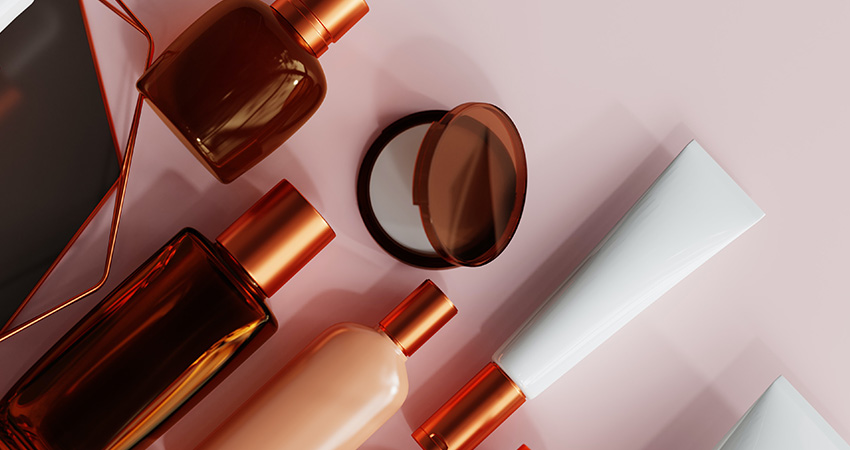Beauty brand loyalty: more than skin deep (credit: pmv chamara on Unsplash)
Throughout the pandemic, customer loyalty has been inconsistent at best. Back in August 2020, as the pandemic raged throughout the U.S and the world and store closures were at an all-time high, shoppers flocked to ecommerce like never before.
Qubit’s consumer survey from August 2020 found that one in two consumers did more than 75% of all their shopping online, and one in four did so more than 90% of the time. However, despite the increase in ecommerce shopping volumes, customer loyalty declined. Mid-pandemic, the same survey found that 36.6% of consumers shopped with more brands than a year earlier, and 46.2% admitted to being less loyal to the brands they love.
When Qubit took another look at loyalty indicators this past January, some behavioral trends reflected more positivity regarding customer loyalty. Analyzing nearly 1 billion ecommerce store visits and 22 million purchases across 75 retail brands during December 2020, we found that loyalty indicators were up across the board, with returning visitors increasing across all retail segments analyzed. Beauty brands had one of the highest returning visitor upticks (+16.1%), only second to general merchandise, including pharmacies, furniture stores and home and garden.
So, how can beauty retailers capitalize on the upswing in loyalty trends, and ensure customers who have adopted ecommerce for the long haul stay loyal? There are a number of personalization best practices and techniques beauty brands can leverage, starting with the first visit, leading to the second purchase, and then incorporating ongoing efforts to forge and strengthen a 1:1 loyal relationship.
First Impressions Foundational to Fostering Loyalty
Understanding how to captivate and sell to new site visitors, especially as the beauty industry continues to swell with new brands, is the first step to building a loyal and engaged customer base. A key tactic: creating tailored experiences for those checking you out by opening avenues for them to get to know you better. At the same time, you need to keep in mind the differences in how shoppers interact with your brand.
For example, beauty products popular with a younger consumer base are likely to have been discovered on social media, on a phone and through influencers. Welcome messaging must be strategic to guide new shoppers through their first experience in the optimal way. This means designing messaging content that maximizes session engagement, signposts bestsellers and promotes new products.
Also vital is making that first shopping experience as simple and interactive as possible by promoting support features like chatbots and virtual reality tools. Providing relevant sample pushes or complimentary products once there are items in her cart can also help make a strong first impression.
Another way to introduce new shoppers to your brand is through hero product badging and bestseller carousels. In the long term, hero product domination can become an issue because shoppers aren’t exposed to products they may like, but they’re essential for new visitors. For beauty brands particularly, it’s important to highlight iconic or bestselling products with badging. Some best practices include surfacing popular products using social proof techniques based on real-time purchase data, and encouraging customers to add hero products to their cart.
Making the Most of the Second Purchase
The first purchase is challenging enough; getting her to that critical second purchase can be even more difficult. For beauty brands, 83.9% of customers are one-time-only purchasers, according to Qubit’s internal data. Yet beauty customers who purchase for the second time are 4.2x more likely to go on and purchase at least four more times.
Moving shoppers from first purchase to second purchase is tremendously valuable to the brand, representing multi-million-dollar opportunities for many retailers within the beauty industry. Leveraging personalized product recommendations and tailored email strategies are effective ways to keep customers engaged, while guiding them to their next purchase. Ditch “batch and blast” strategies for personalized thank-you emails to new customers, tailoring product recommendations based on recent browsing and purchase history.
Then, take it one step further with personalized replenishment prompts for repeat purchasers who tend to stock up on the same products. Since many beauty customers tend to purchase the same products as part of their beauty regimen, providing a personalized replenishment prompt delivered on site or via email, notifying her it’s time to stock up, makes shopping with your brand as effortless as possible while fostering loyalty.
Growing Loyal Online Shoppers
After that second purchase, how do you move more shoppers into loyal customers? After all, it’s widely recognized that the highest percentage of revenue comes from a small fraction of high-value customers. There are a few top strategies to consider in order to turn an occasional customer into a regular shopper.
One technique is to display loyalty benefits for returning shoppers during their site visits. These may include discounts on specific products on the Product Detail Page (PDP) or shipping perks, such as expedited delivery. A well-placed persistent message served in the navigation is another great way to remind customers of your loyalty program.
Surfacing point levels within a loyalty tier and the amount needed to move to the next loyalty level can also be compelling. Email is a powerful tool for supercharging loyalty promotions. Connecting a customer’s onsite behavior with their loyalty level can be accomplished by sending personalized emails with tier information and benefits to encourage visits and revenue.
Loyalty is an art and a science. For a loyalty program to be successful, it’s vital to think about the arc of a loyalty campaign, from welcome messaging and badging to encouraging the critical second purchase. This moves through product recommendations, samples and replenishment strategies. Finally, you can retain customer loyalty through signpost benefits, tier upsell tactics and personalized email strategies.
Robin Trickett is VP of Strategy at Qubit

